Greece › Naxos Travel Guide
Updated: November 9, 2023
By Santorini Dave
Popular Pages
• Best Naxos Towns
• Best Naxos Hotels
• Best Hotels for Families
• Best Beach Hotels
• Best Naxos Beaches
• Athens to Naxos Ferry
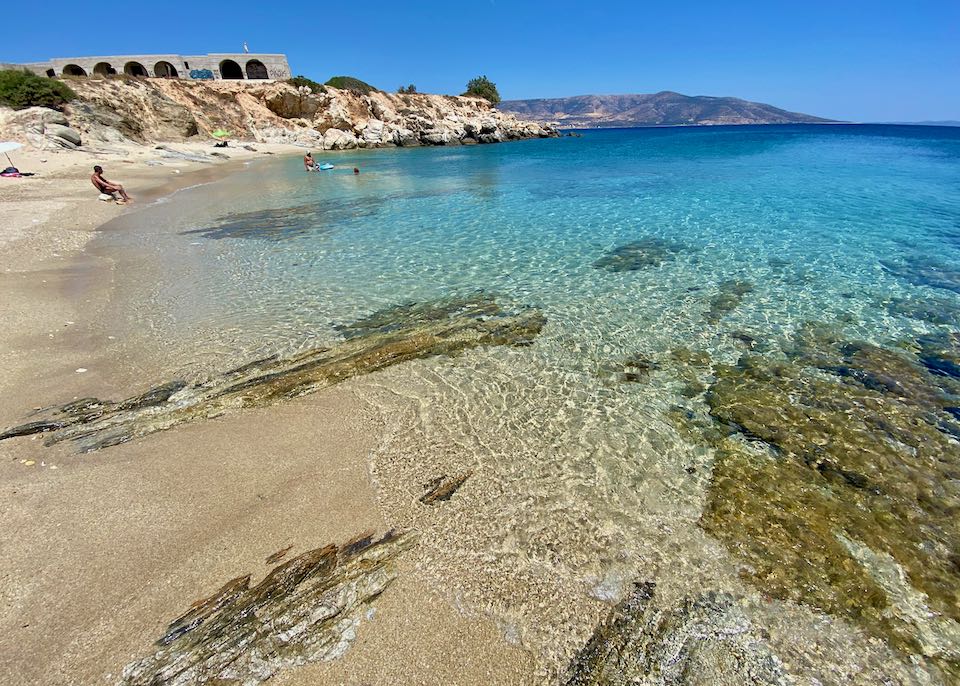
Naxos has some of the best beaches in Greece. Most are easily accessible by bus from Naxos Town.
Naxos is the largest and greenest of the Cycladic islands in the Aegean Sea. This relaxed island is wrapped in long, sandy beaches, while its interior is dotted with farms, olive groves, charming mountain villages, and over 200 Byzantine churches. Expect amazing food, a low-key vibe, and true Greek hospitality. Naxos lies about halfway between Santorini and Mykonos and makes a great respite from those high-octane islands.
The 2024 Naxos Travel Guide
- Skip to our Naxos FAQ
Naxos Basics
- Where to Stay in Naxos
- Best Time to Visit Naxos
- Naxos or Paros?
- Naxos Travel Videos
- Naxos Travel Maps
Naxos Hotels
Naxos Activities and Attractions
Naxos Trip Planning
- Getting Around Naxos by Bus
- Santorini to Naxos Ferry
- Naxos to Santorini Ferry
- Athens to Naxos Ferry
- Naxos to Athens Ferry
Latest Articles & My Travel Newsletter
Frequently Asked Questions about Naxos
See Also: Greece: Tips & Information for First-Timers
Where is Naxos?
Naxos is an island in Greece, part of the Cycladic group located in the Aegean Sea. Naxos lies about 40 km south of Mykonos, 180 km southeast of Athens, 85 km North of Santorini, and 200 km north of Crete. Flights to Naxos take 40 minutes from Athens; there are no direct flights to Naxos from any other cities. Greek ferries are most commonly used to get to and from Naxos, whether from Athens or any of the nearby islands.
How big is Naxos?
Naxos has a population of almost 21,000 and a land area of 430 sq. km (about 1/4 the size of Maui, Hawaii, and 7.5 times the size of Manhattan). The length of the island is around 40 km, and it measures around 30 km at its widest point. It takes about 90 minutes to drive the longest way (north to south) from one end of the island to the other.
What is the history of Naxos?
In Greek mythology, Naxos is the childhood home of Zeus, who was raised in a cave on what is now Mount Zas in order to hide from his father Cronos, who had already eaten his 5 siblings. Zeus’ son Dionysus was also raised on Naxos, where he later fell in love with and married Ariadne, who had earlier been abandoned on Naxos by Theseus.
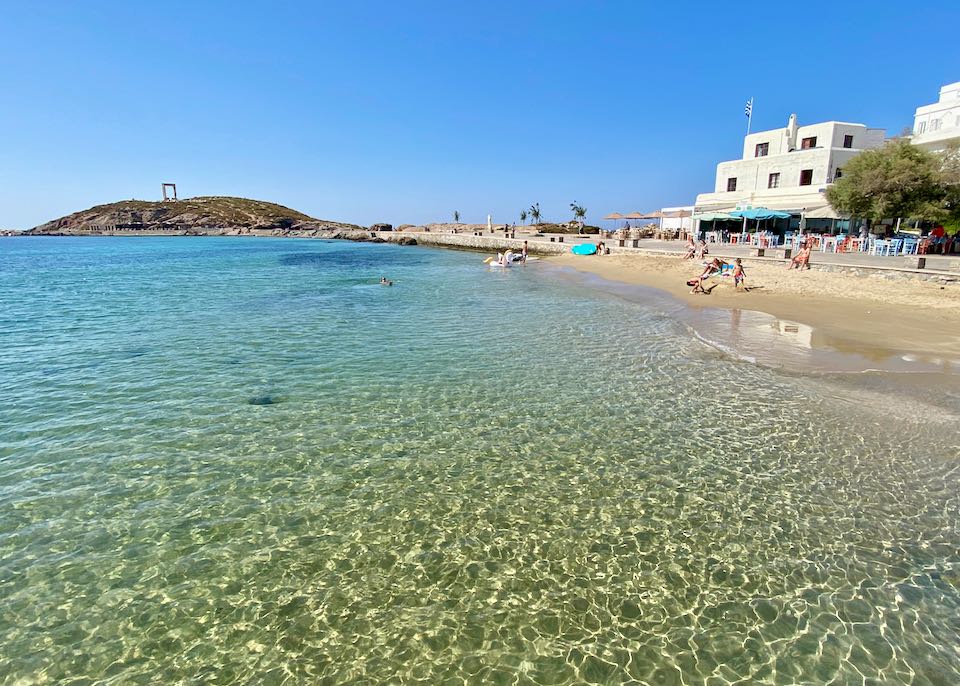
The marble Portara (gate) of the Temple of Apollo at Naxos Harbor dates back to the 6th century BC and is visible from the ferry pier.
The Thracians were the first inhabitants of Naxos, dating back to 4000 B.C., and the island was named for their leader, Naxos. The island subsequently has been ruled by the Careans, Ionians, Athenians, Spartans, Macedonians, Egyptians, Rhodians, and Romans. Naxos boasts the oldest Byzantine churches in Greece: the 6th-century monastery Christ Photodotis and the 7th-century Panagia Drosiani church, dedicated to the Virgin. There are over 200 Byzantine churches in Naxos, many with original frescoes, as well as 500 pre and post-Byzantine churches, many linked by hiking trails through the mountains. The Venetians established the Duchy of the Aegean in the 13th century, made Naxos its capital, and built a castle in what is now Naxos Town. The Ottomans attempted to take the island in the 15th century but were unsuccessful. The Venetians managed to retain control over Naxos during the Ottoman rule over the rest of Greece. Naxos officially became part of the independent Greek state in 1832.
Some of the oldest Byzantine churches in Greece are found throughout the Naxos countryside.
When is the best time to go to Naxos?
Naxos has a shorter travel window than its neighbors Santorini and Mykonos. Most hotels in Naxos open from early May to mid-October, though a handful are open from March through November or longer. The best time to visit Naxos for warm weather, great swimming, sunbathing, and sailing is from late June through early September. If swimming and hot weather are not priorities, then April, May, and October are perfect for sightseeing, archaeology, history, dining, and enjoying the little bit of nightlife in Naxos Town.
How do you get to Naxos?
Ferries from Athens to Naxos will make a few stops and take anywhere from 3 to 6 hours, depending on the type of ship. Naxos has direct ferries to Paros and Santorini. Ferries connecting Naxos to the islands of Mykonos, Ios, Milos, Folegandros, and Crete often make multiple stops. Ferryhopper.com is the best way to search for and purchase ferry tickets to and from Naxos.
Both Sky Express and Olympic Air offer direct flights from Athens to Naxos, which take about 40 minutes. Note that flights will sell out much earlier than ferries – if you find a flight that works for you, book it as soon as possible. There are no direct flights to Naxos from any other cities.
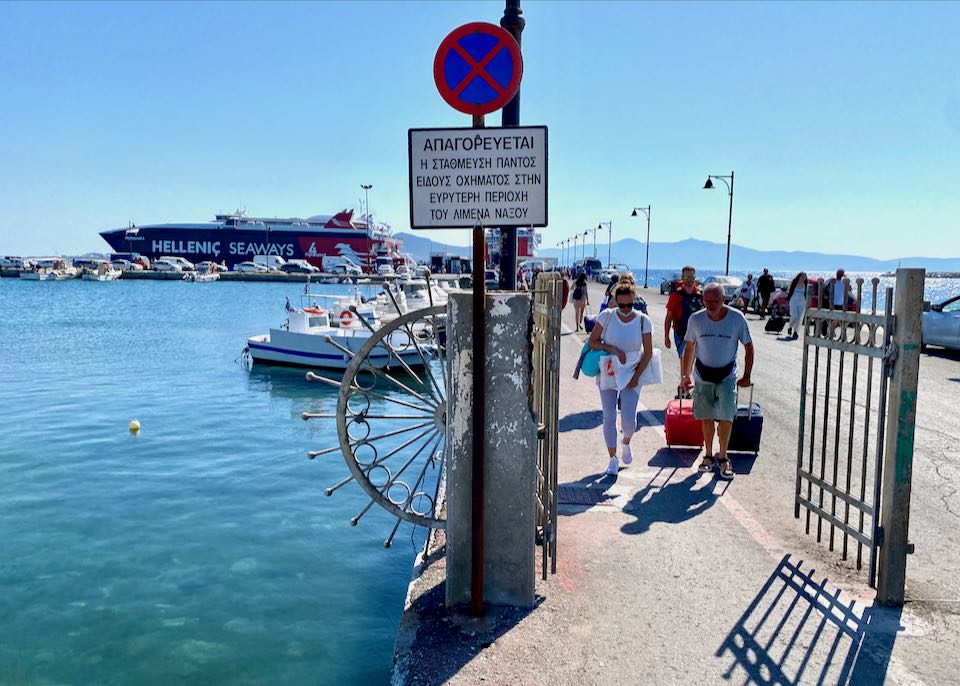
The ferry port in Naxos Town is an easy walk to the center of town and many hotels. Hotels at St George’s Beach might be too far to walk if you have more than a backpack.
What are the main towns on Naxos?
The main village on Naxos, where the vast majority of restaurants, bars, shops, and hotels are located, is called Naxos Town or Chora. In Chora, you’ll find the Castle (aka Kastro) of Naxos, the Apollo Temple ruins, some small museums, and a labyrinth of narrow lanes filled with local shops and tavernas. Agios Georgios (Saint George) Beach is a short walk from the heart of Naxos Town. Chora is the transportation hub for ferries, taxis, and the few buses serving the island.
There are several small, traditional villages in the mountainous center of the island, the largest among them being Filoti, Apeiranthos, and Glynado, and the most picturesque being Chalki. Villages in central Naxos are surrounded by farms, vineyards, olive groves, and dairies. The greenest and most fertile Cycladic island, Naxos is known for its produce (especially potatoes), cheeses, cattle, and Kitron, a local citrus liqueur.
The more popular beaches of Agios Prokopios, Agia Anna, Plaka, and others have accumulated a number of restaurants, beach clubs, hotels, and mini-markets so that they feel like unofficial villages.
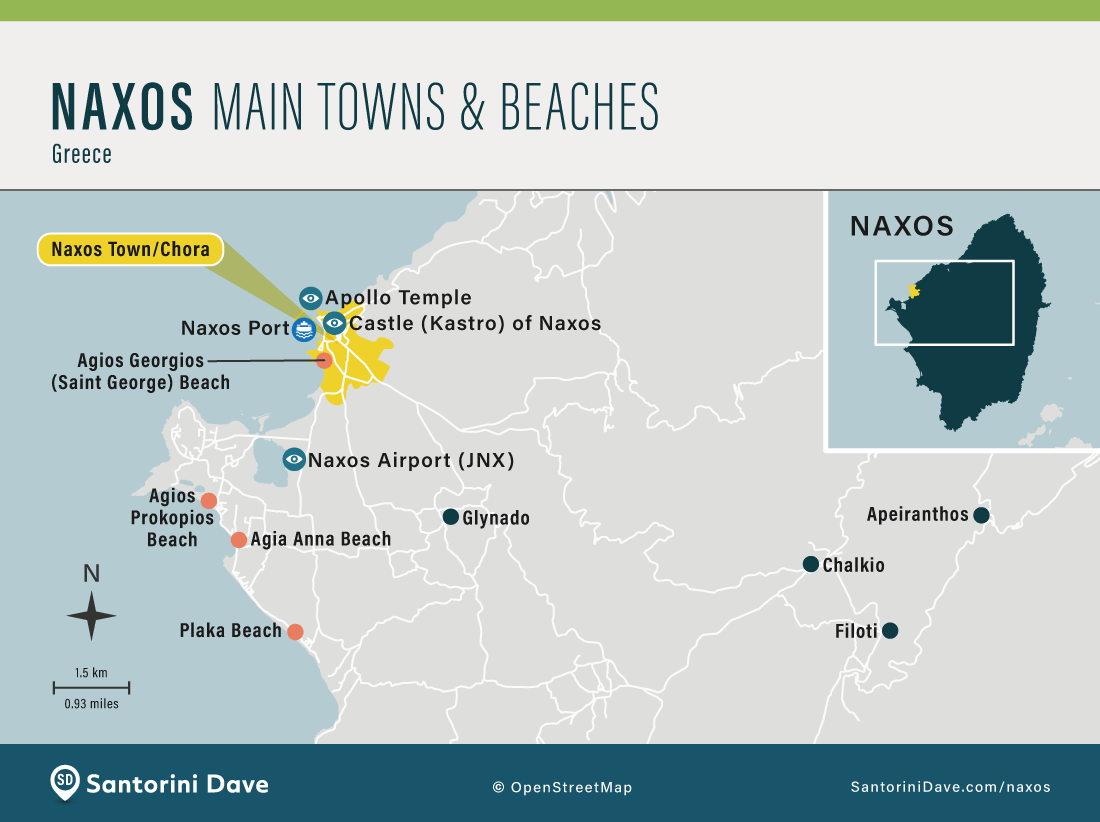
What are the best beaches on Naxos?
Naxos’ best beaches are generally found along the island’s west coast, getting more scenic the farther south you travel. Some of our favorites are Plaka Beach with its wide expanse of golden sand, cedar-lined Alyko Beach, and remote Pyrgaki Beach. Agios Georgios (St. George), Agios Prokopios, and Agia Anna are the best Naxos beaches for families, as they all feature calm water and many beach tavernas and cafes. Mikri Vigla Beach is popular for windsurfing and kitesurfing. It’s easy to stay in Naxos Town and visit nearby beaches during the day; all of these beaches are accessible by bus.
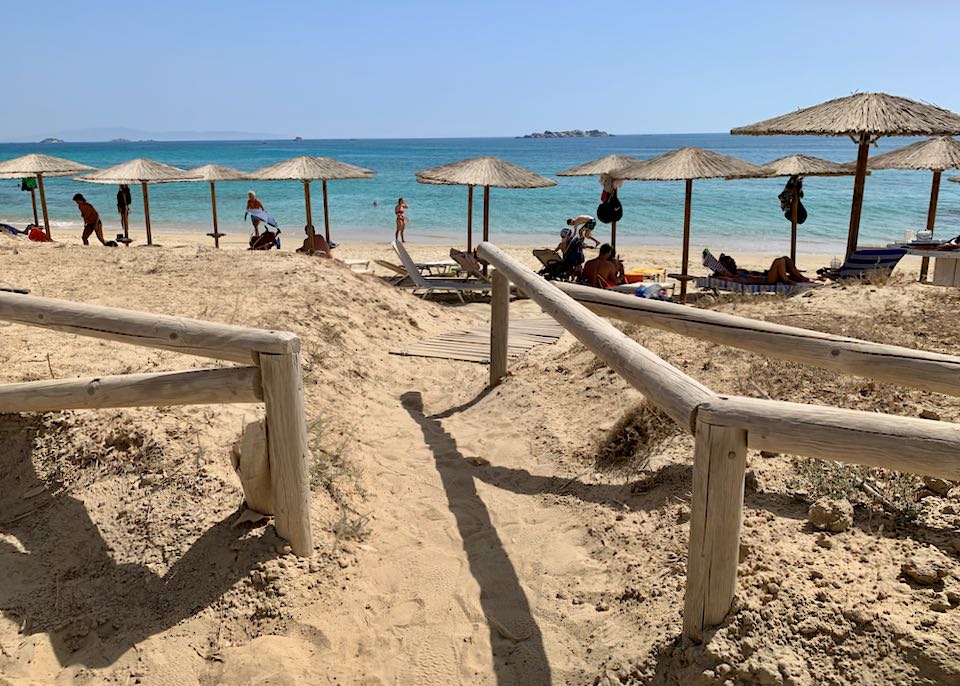
The golden sand and turquoise water of Plaka Beach in Naxos, Greece.
Where is the best place to stay in Naxos?
For most travelers, the best places to stay in Naxos are in the village of Naxos Town or on the beaches of Agios Prokopios, Agia Anna, or Plaka for a good mix of relaxing, dining, sunning, and exploring. Naxos Town is walkable with plenty of restaurants, shops, sights, and the beach within just a few minutes on foot. Agios Prokopios, Agia Anna, and Plaka are connected to Naxos Town by bus, with more frequent routes running in the peak of summer. Those interested in history, culture, hiking, and archaeology may prefer to stay in one of the traditional, mountain villages, such as Filoti, Moni, Sangri, or Glynado.
The view of Agios Georgios Beach from a studio at Kalergis Hotel in Naxos Town.
What are the best things to do in Naxos?
The best things to do in Naxos include dining, shopping, and getting incredibly lost in Naxos Town, swimming and sunbathing at the endless, golden beaches, exploring the archaeological ruins of Apollo Temple and the Temple of Demeter, visiting traditional Chalki village (and its Kitron distillery), windsurfing and kitesurfing, hiking some of the many mountain trails, gazing at the Byzantine frescoes in the ancient churches, and catching the sunset from a perch over the ferry port, from Apollo Temple, or from a mountaintop (Rotunda Cafe in Apeiranthos village has an especially great sunset terrace).
It’s easy to get happily lost in the tangle of shops and footpaths in Naxos Town.
How many days should I spend in Naxos?
Stay a minimum of 2 nights and 1 full day. But there’s so much to see and do that it’s easy to fill 5 days. If possible, do a tour of the archaeological site at the Temple of Demeter, hike a mountain trail (from Moni to Chalki passing by the old churches or hike past Aria Spring up to Zas Cave, Zeus’ childhood home), take a boat trip to one of the many swimming spots on the east side of the island, take a day trip to cosmopolitan Paros island or to the archaeological ruins at the island of Delos, and spend a day at one of Naxos’ sandy beaches, sunbathing and swimming.
Be sure to leave yourself plenty of time to get lost in the maze-like streets of Naxos Town: shop and dine in Chora, stroll to Apollo Temple along the narrow pathway jutting into the sea, explore the Venetian castle ruins, and enjoy a sunset cocktail from one of the small bars above.
The charming stone pathways of Chalki village. A mountain hike from from Moni to Chalki is recommended on trips longer than two days.
Should I rent a car on Naxos?
If you are only staying for a couple of days and will be staying in Naxos Town or at one of the beach towns, there is no need to rent a car on Naxos. Naxos Town is very walkable, and the island’s bus system has frequent routes between the beach towns and Naxos Town (the bus system hub). If you don’t have a car, pre-arranged transfer provided by your hotel or through a private car service is the easiest way to get from the Naxos airport or ferry port to your hotel.
If you’re staying in Naxos Town or one of the beach towns for longer than two days, we recommend renting a car to access the island’s more remote experiences. Visitors staying in the mountains will definitely need to rent a car, as the mountain villages in Naxos have little to no bus access. RentalCars.com is the best website for pre-booking rental cars in Greece.
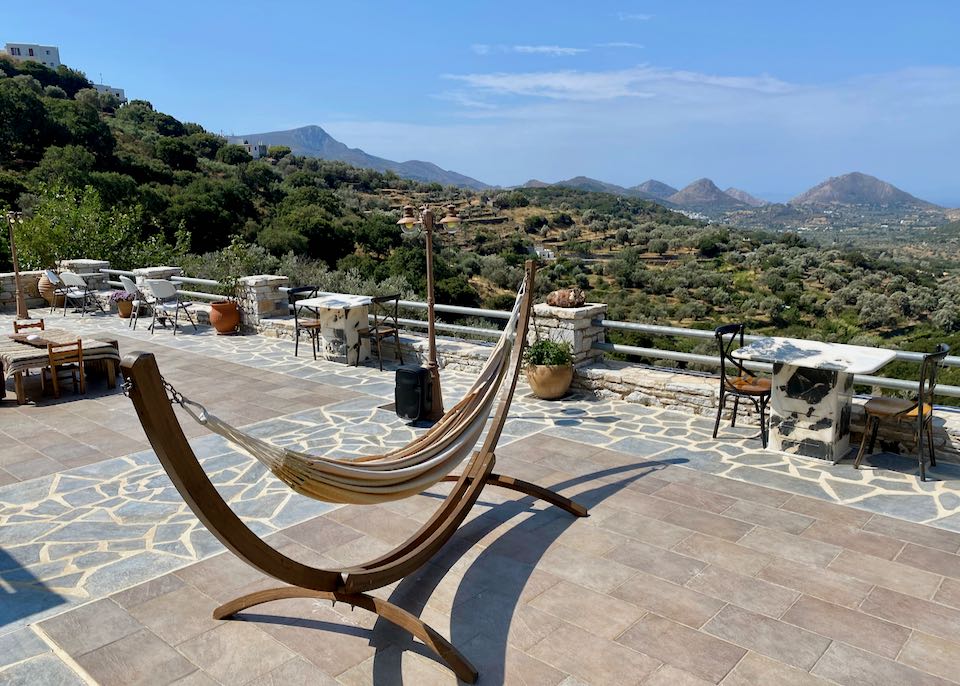
Buses on Naxos serve all the major beach towns, but much of the island’s scenic mountain countryside is only accessible by car. Pictured is the idyllic inland setting of ELaiolithos Luxury Retreat.
What currency is used in Naxos?
Greece is part of the European Union, so the currency used on Naxos is the Euro (€). In Naxos Town and the beaches, most shops, bars, and restaurants accept credit cards, usually with a minimum purchase required; if not, nearby ATMs are easy to find. It is a good idea to have some cash on hand for bus trips and small purchases like bottled water and snacks. In the remote villages, there are many more cash-only businesses and maybe 1 or 2 ATMs in each village.
Most restaurants in Naxos Town, like the excellent Doukato, accept credit cards.
Is Naxos expensive?
Naxos is still largely off the tourism radar. Though you can spend hundreds on a room, many of the best hotels in Naxos fall into the moderate or budget categories, including many beachfront properties. There are no all-inclusive resorts or vacation packages. All beaches are open to the public and free to visit. Most beach clubs offer free umbrellas and sunbeds to guests who purchase a drink or food; the ones that do charge, usually only cost €10 or so.
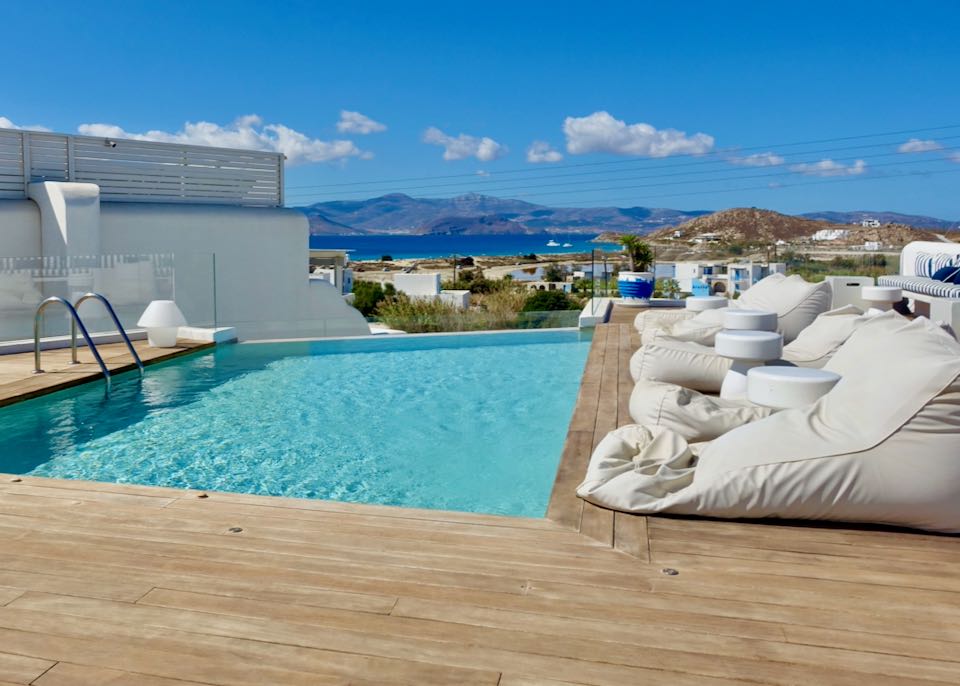
Even the best hotels, like 18 Grapes overlooking Agios Prokopios Beach, are blissfully affordable when compared to Santorini or Mykonos prices.
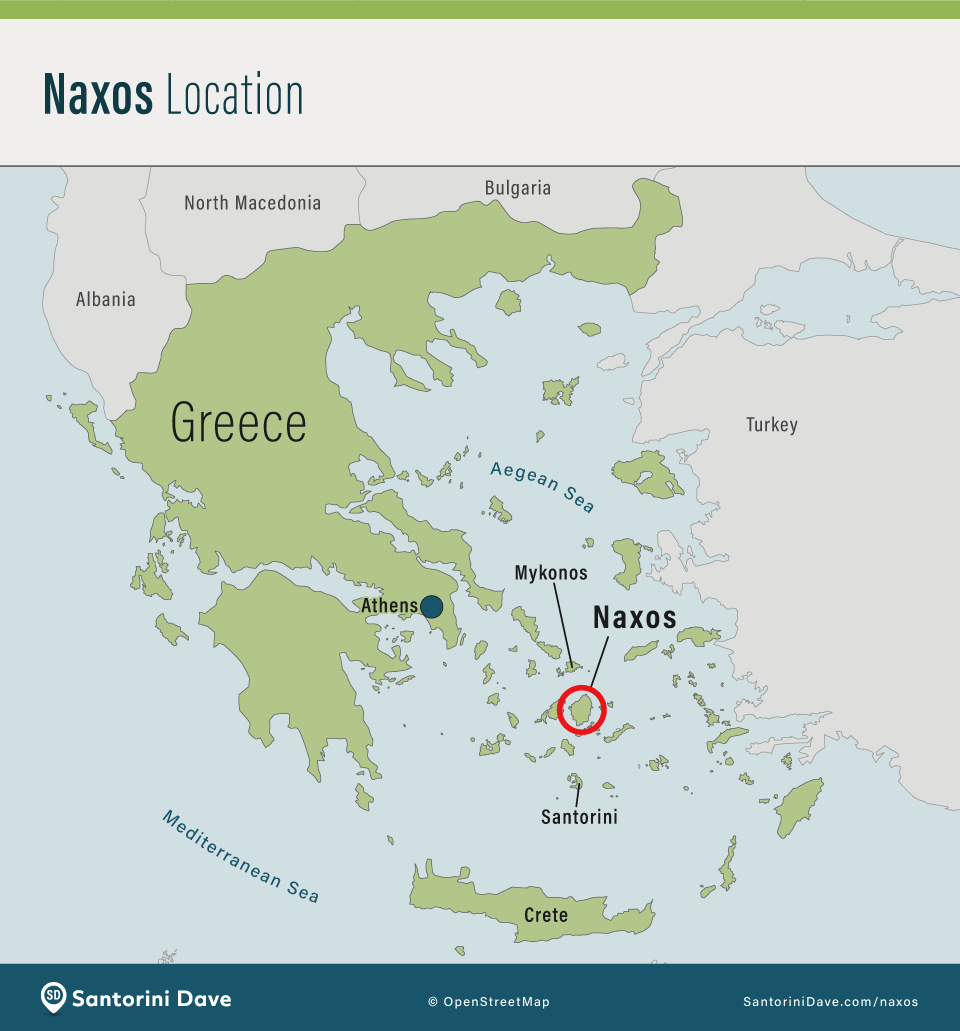
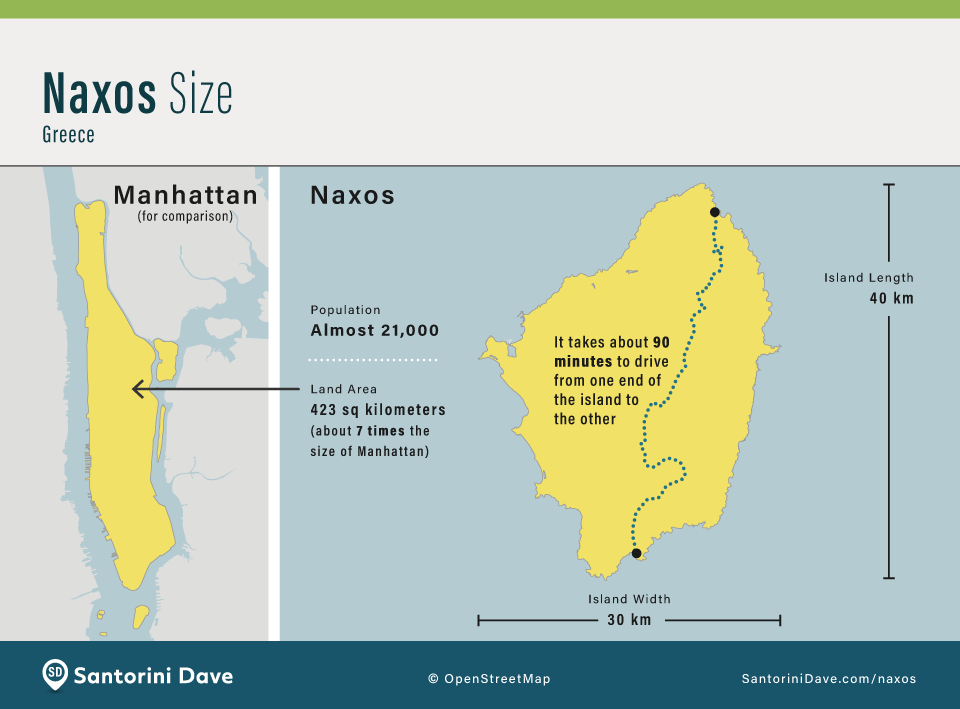
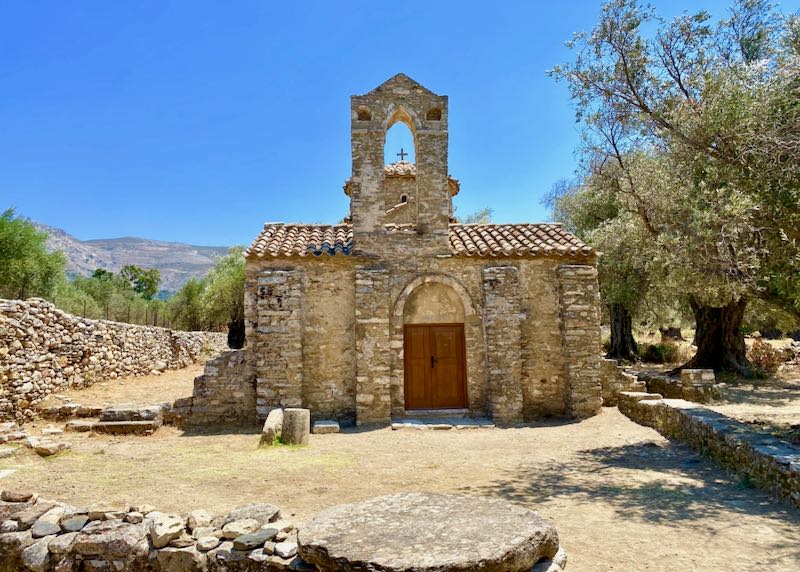

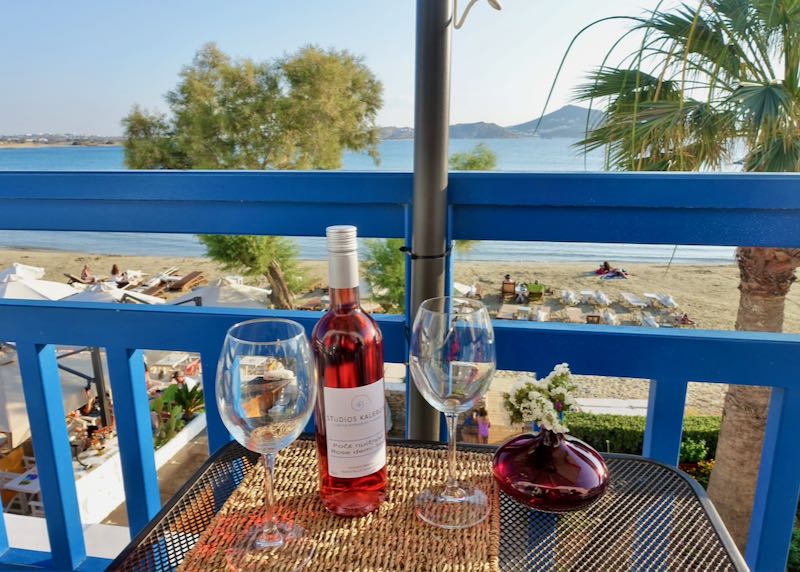
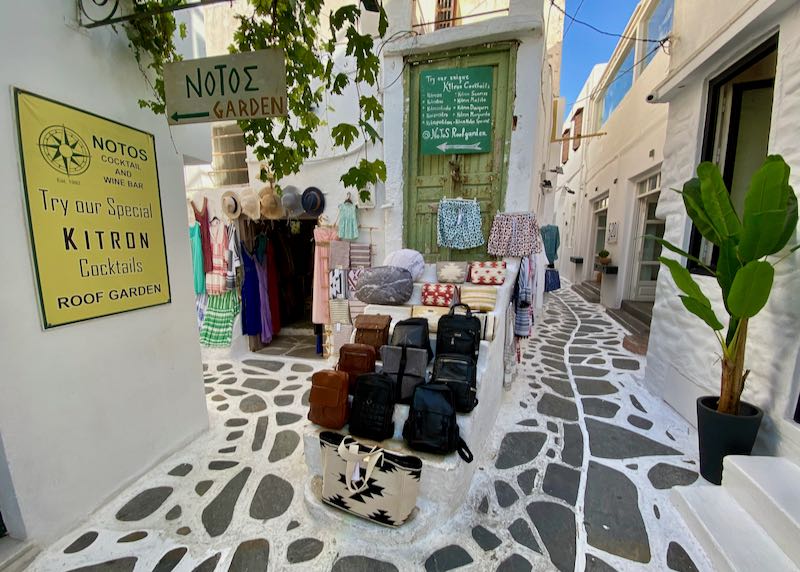
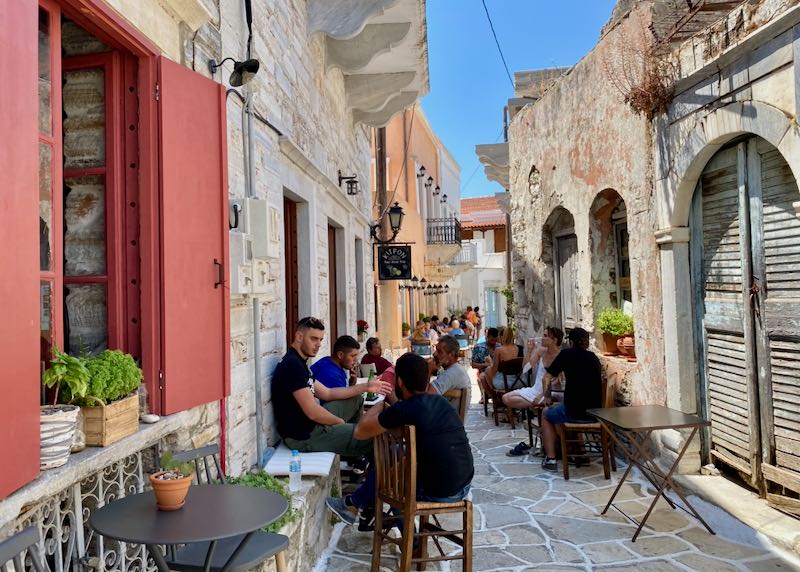
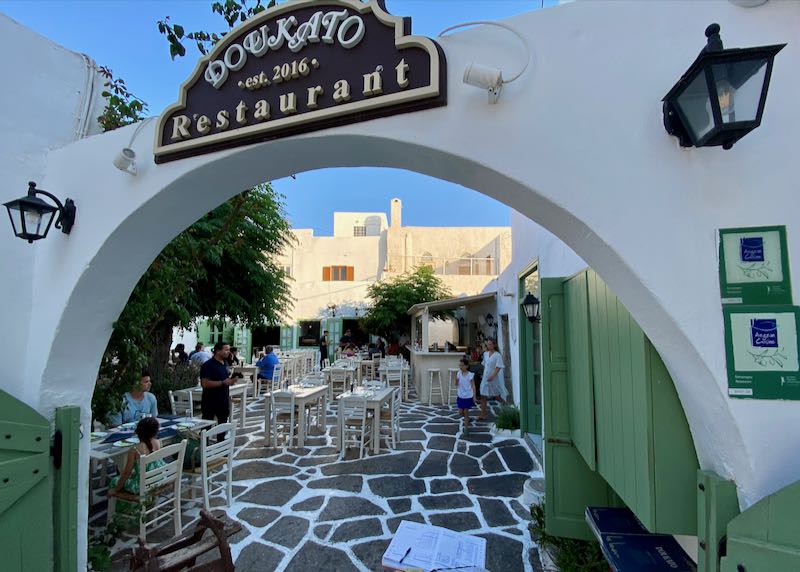
About Santorini Dave